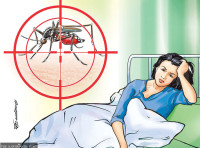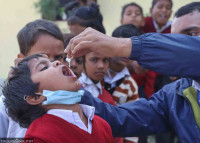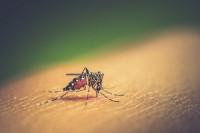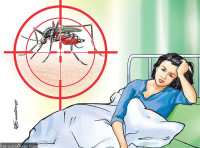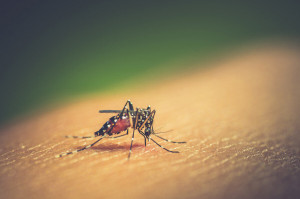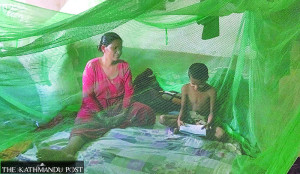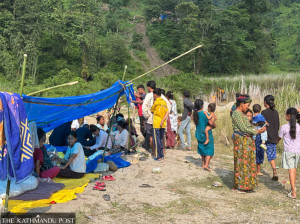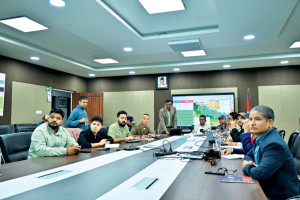Health
Monsoon in, snakebite risk up. Even mountain districts are not immune
1,200 snakebite cases have been recorded so far this year. Snakes are climbing altitudes due to climate change.
Arjun Poudel
Last month, a local from Sindhupalchowk district was brought to Sukraraj Tropical and Infectious Disease Hospital to treat a snakebite. Along with the victim, relatives brought the live snake in a bottle to show the doctor as proof.
“The snake was a king cobra,” said Dr Yuba Nidhi Basaula, director at the Hospital. “Fortunately, the venom had not penetrated deep into the victim’s body, and after three days of treatment, the victim was discharged. We called a snake handler and handed over the king cobra.”
Sindhupalchowk is a mountain district where venomous snakes were thought of as non-existent. However, incidents of king cobra bites in mountain districts like Sindhupalchowk suggest that venomous snakes have started migrating towards hill and mountain districts, and rising temperatures caused by climate change are the main culprit, experts say.
Nepal is among the world’s most vulnerable countries to the climate crisis and has witnessed multiple extreme weather events over the past decade and a half.
Evidence suggests that maximum temperatures in Nepal are rising at a faster rate of 0.056 degrees Celsius a year, compared to the global average rise of 0.03 degrees Celsius a year.
Compared to districts of the Tarai region, those in hills and mountains have been witnessing a more rapid increase in daytime maximum temperatures, which could have helped venomous snakes survive there, experts say.
“Not only in Sindhupalchowk, but a king cobra bite was also spotted in Godawari of Lalitpur district last year,” said Basaula. “Snakebite cases have started rising alarmingly of late.”
Of the 31 patients admitted to the hospital on Sunday, 16—more than 50 percent—were snakebite cases. Doctors at the hospital say eight to ten snakebite victims seek treatment there every day, and most victims seeking care at the hospital are from the districts of Kathmandu Valley or from those adjoining the Valley.
Each year, around 2,700 people, mostly children and women from Nepal’s Tarai region, die of snakebites, according to a March 2022 report published in The Lancet, a leading international medical journal.
However, snakebite cases are vastly underreported in the country. The Ministry of Health and Population said that only 14 deaths and 1,220 cases of snakebites had been reported in 11 months of the current fiscal year.
Officials admit that venomous snakebite incidents are being reported from hill and mountain districts, and the demand for anti-snake venom is on the rise. They attribute this rise in snakebite incidents to rising temperatures.
“Health facilities in some mountainous and hilly districts—like Darchula and Bajura—have asked for anti-snake venom,” said Dr Hemanta Chandra Ojha, an official at the Epidemiology and Disease Control Division.
“Snakebite incidents have been on the rise,” said Dr Hemanta Chandra Ojha, an official at the division. “With the onset of the monsoon, people living in the risk areas should remain vigilant.”
Every year, the Health Ministry purchases around 25,000 vials of anti-snake venom and distributes them to around 100 snakebite treatment centres in the country.
Officials say as snakebite cases surge, so will the demand for additional treatment centres.
“This year, we are planning to set up an additional 15 snakebite treatment centres,” said Ojha.
Public health experts have urged authorities to launch an awareness drive about the risks. They say people living in thatched-roof houses are particularly vulnerable to snakebites, as snakes often enter such homes in search of rats. They say people should be asked to keep their homes and surroundings clean, prevent children from playing in bushy areas, avoid venturing out at night, and use torchlights while walking in the dark.
Likewise, women and children who have to work in fields and go to the jungle are at the highest risk of snakebites. Small children are at risk of dying from snakebites, as they do not tell their parents about the bites on time due to fear of getting scolded for playing in the bushes, according to doctors.
“We should make people aware so that they seek medical attention immediately after a snakebite, using whatever means of transport they get,” said Ojha. “The faster you reach the hospital, the greater your chances of survival.”




 25.12°C Kathmandu
25.12°C Kathmandu
